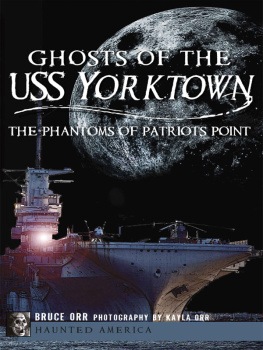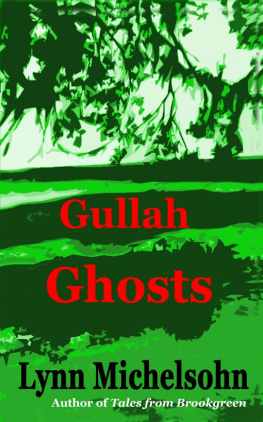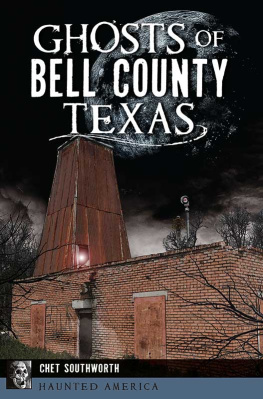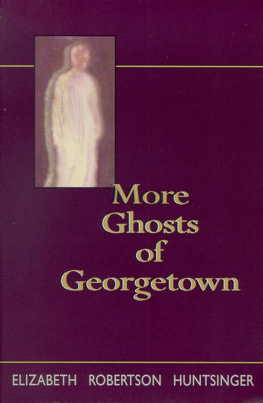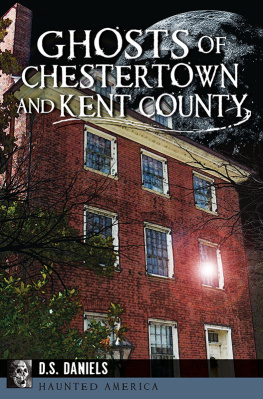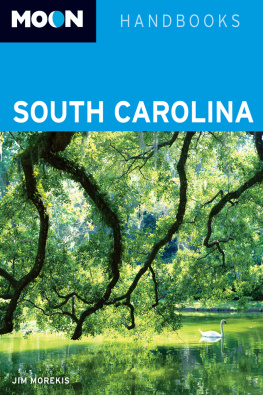Published by Haunted America
A Division of The History Press
Charleston, SC 29403
www.historypress.net
Copyright 2011 by Bruce Orr
All rights reserved
First published 2011
e-book edition 2013
Manufactured in the United States
ISBN 978.1.62584.172.8
Orr, Bruce.
Ghosts of Berkeley County, South Carolina / Bruce Orr.
p. cm.
Includes bibliographical references.
print edition ISBN 978-1-60949-417-9
1. Ghosts--South Carolina--Berkeley County. I. Title.
BF1472.U6O73 2011
133.10975793--dc23
2011030453
Notice: The information in this book is true and complete to the best of our knowledge. It is offered without guarantee on the part of the author or The History Press. The author and The History Press disclaim all liability in connection with the use of this book.
All rights reserved. No part of this book may be reproduced or transmitted in any form whatsoever without prior written permission from the publisher except in the case of brief quotations embodied in critical articles and reviews.
For Chief Orr, my late father,
For Skip, my stepfather,
For my brothers,
and
For my Uncle Thomas, the man who taught me how to tell a tale.
Lifes a journey, not a destination.
Ralph Waldo Emerson
Then perhaps death in itself is just another part of the journey.
ACKNOWLEDGEMENTS
I would like to take this opportunity to thank those people who helped me along the way in this endeavor:
The late M.C. Cannon, former sheriff of Berkeley County.
The late Johnny Richardson, former deputy sheriff with Berkeley County.
Sheriff Wayne Dewitt and my friends and associates with the Berkeley County Sheriffs Office.
The Library of Congress Prints and Photographs Archives.
Kayla Orr and KOP (Kayla Orr Photography) Shots.
The Berkeley County Public Library.
The Dorchester County Public Library.
The Charleston County Public Library.
The Henry Timrod Library.
The Berkeley County Museum.
Ray Bayless.
Rachel Bayless Smith.
Rick Presnell, owner of Swamp Fox Diving, and his sons, Erik and Alex.
Brooke and Jodie Haynie of Charleston Collegiate School.
Finally, the men, both those still here and those passed on, with whom I have had the privilege of hunting and fishing in my youth and who took the time to share a tale or two.
INTRODUCTION
Berkeley County, South Carolina, was established in 1682. It was named after John and William Berkeley, co-owners of the Province of South Carolina. It is the largest county in size in the state, covering a total area of 1,228 square miles. As of the Census of 2000, the population of the county was 142,651.
Often overshadowed by the city of Charleston, located in neighboring Charleston County, Berkeley County and its towns are often forgotten as historical landmarks. It has great historical significance, and its contributions helped form the nation in which we now reside. While historic Charleston was occupied by the British and under British rule, rural Berkeley County was the location of many skirmishes and battles in the fight for this countrys independence. The swamps and wetlands of Berkeley County were ideal for hiding and concealment, and colonial leaders such as Francis Marion utilized them for hit and run tactics that they had learned from their interaction with the Native American tribes in the area. These types of attacks surprised and baffled the British forces. Francis Marion and his troops, dressed in drab woodland colors, would hide and ambush the British forces. In stark contrast, the British forces were easily spotted. The flash of highly polished metal on their uniforms and the sound of it clanking against itself alerted colonial troops of their presence. The bright white trousers and brighter red coats did not help them much either. It should not come as much of a surprise that this attire earned the British troops the nickname Redcoats. Francis Marions type of attacks and his ability to rapidly disappear into the dense swamplands of Berkeley County likewise earned him a nickname from his British adversaries: the Swamp Fox.
In later years, after South Carolina seceded from the Union, the Confederacy also recognized the value of Berkeley County as a secluded location for covert operations. The Confederacy used Stony Landing in Moncks Corner to secretly build the Little David, the first submarine in history to be successful in battle and to utilize a successful torpedo attack. While the CSS Hunley attracts attention in Charleston, the fact remains that if it had not been for its predecessor in Berkeley County, the CSS Hunley would have never existed. It is stories such as these that are often overlooked and more often overshadowed by Charleston. The same is true in regards to Berkeley Countys ghost tales, folklore and legends.
My father was a retired chief in the U.S. Navy. We resided inside the boundaries of Berkeley County, just outside the town of Goose Creek. Throughout Berkeley County, my father was known simply as the Chief. People who were unfamiliar with his naval background often asked him what he was chief of. His dark skin confused some, I am sure, and perhaps they thought he was referring to some Native American title that had been bestowed on him. At first my dad would often explain the naval connection, but as the inquiries continued (and failed to diminish), he became weary and developed a new response. He would simply respond, Im chief of the whole damn Creek! He laid claim to being chief of the entire town of Goose Creek, and by the time he passed away in 1998 he was the Chief of the Creek to many in the area.
I often spent my springs fishing with him, summers working for him and falls and winters hunting with him. This allowed me to meet many interesting individuals who shared the tales of the area with a scrawny young boy who would one day be able to put them in a book for future generations.
In the early 1980s, I chose to enter the field of law enforcement. My father worked on and maintained the patrol vehicles for the Berkeley County Sheriffs Office. When I told him of my intentions, he took me to see Sheriff M.C. Cannon, and together they spent more than an hour trying to talk me out of it. I was twenty years old. In the end, they were unable to sway me, and M.C. told my father that he would make me a jailer inside the jail and that if I survived until I was twenty-one, the age required by the state for certification, he would make me a deputy.
I survived and M.C. kept his word. When I turned twenty-one, he made me a deputy, and his captain, future sheriff Wayne Dewitt, presented me with my first badge as I was sworn in. It was the beginning of a long and rewarding career, and although I finished my career in another county under another sheriff, named Cannon, I never forgot that hour in M.C.s office or where I came from.
I have since retired from law enforcement and returned to Moncks Corner and Berkeley County, where I reside. They say you can never go home again. That, my friends, is a lie. I have returned home, where I will live out the remainder of my life. Perhaps after I am dead and gone I will stay a little while longer. I would love to stomp about and slam doors at 3:00 a.m. I would pay my children back for all the door slamming that they did in their teenage years.




